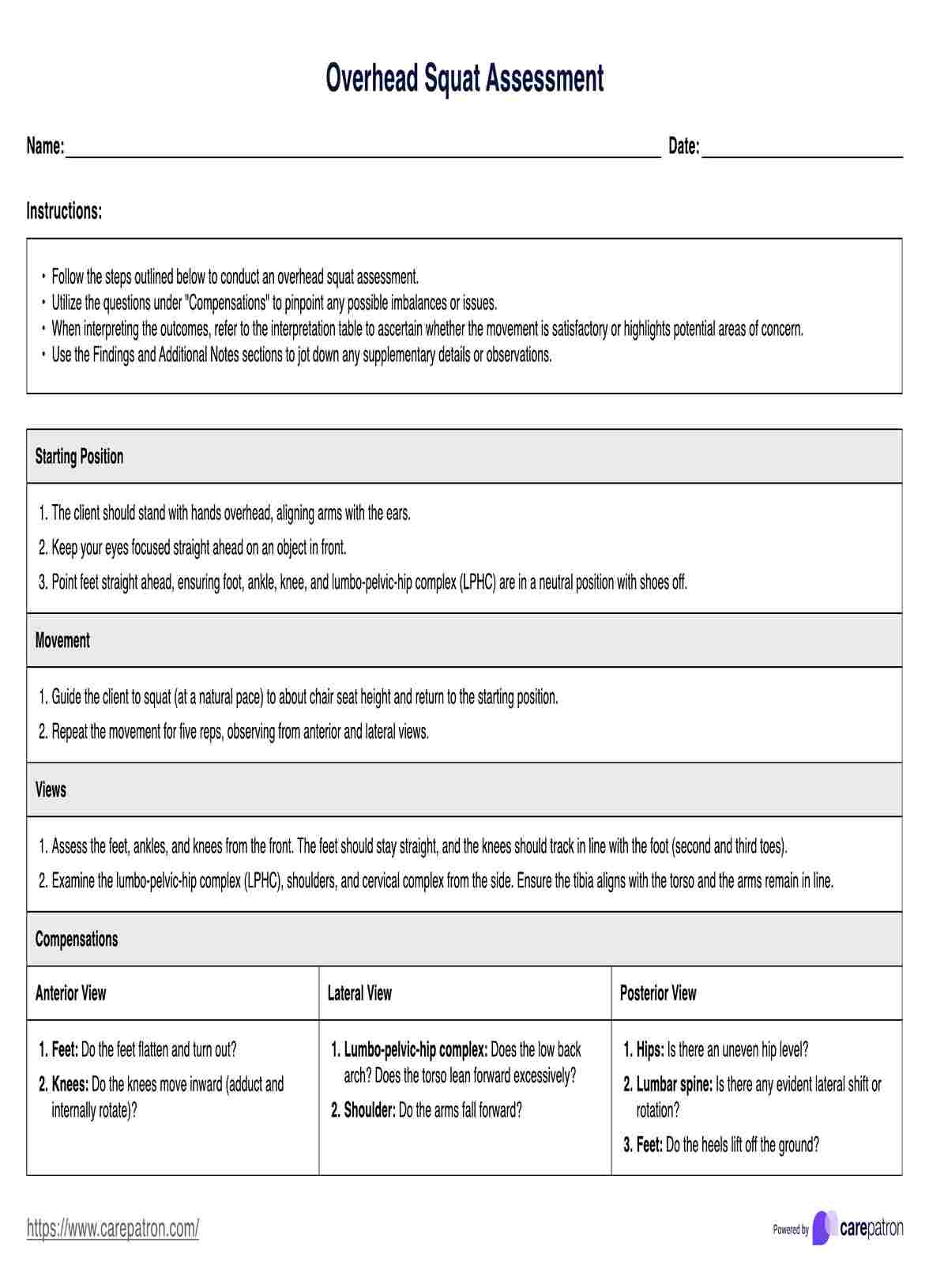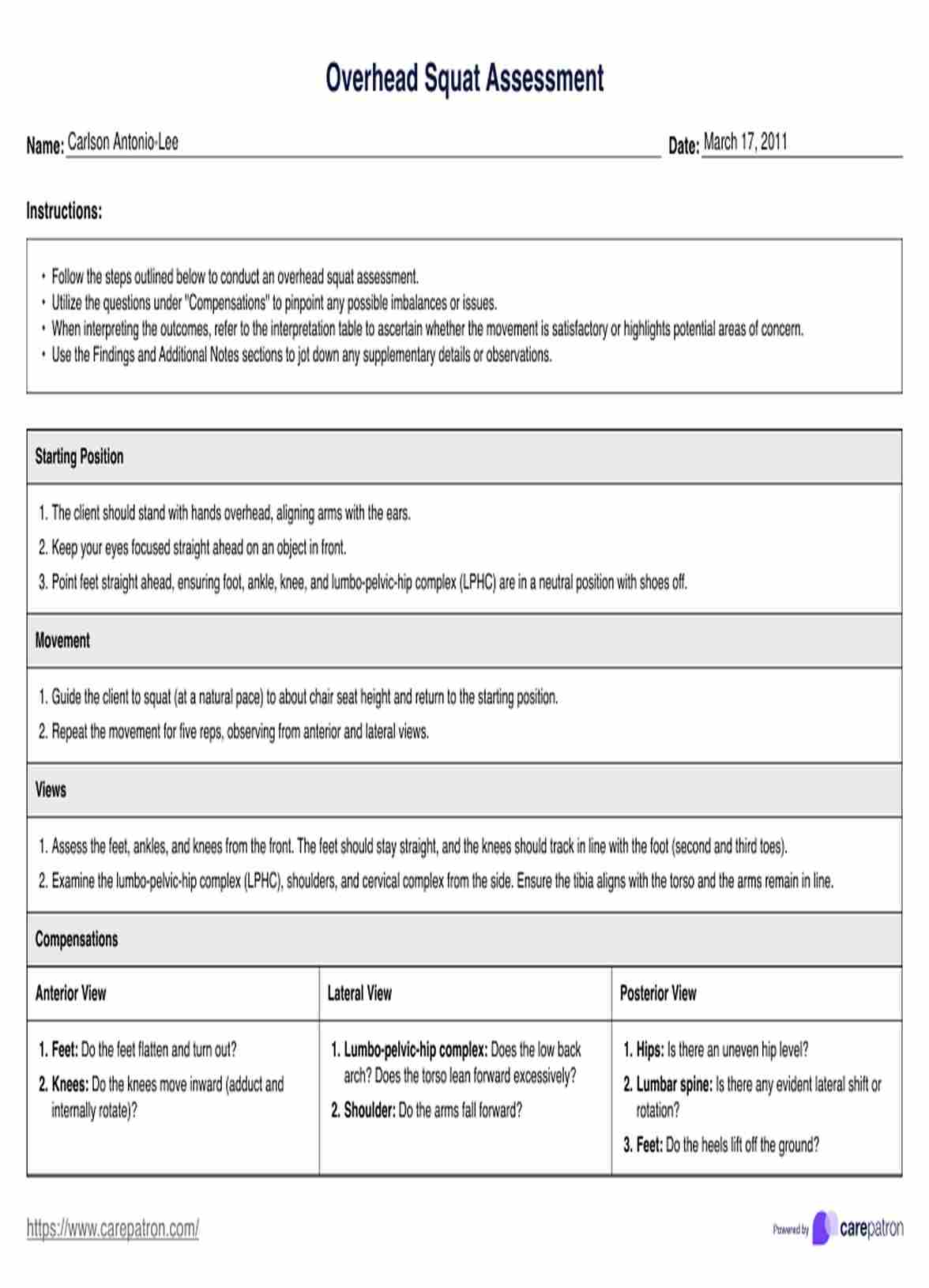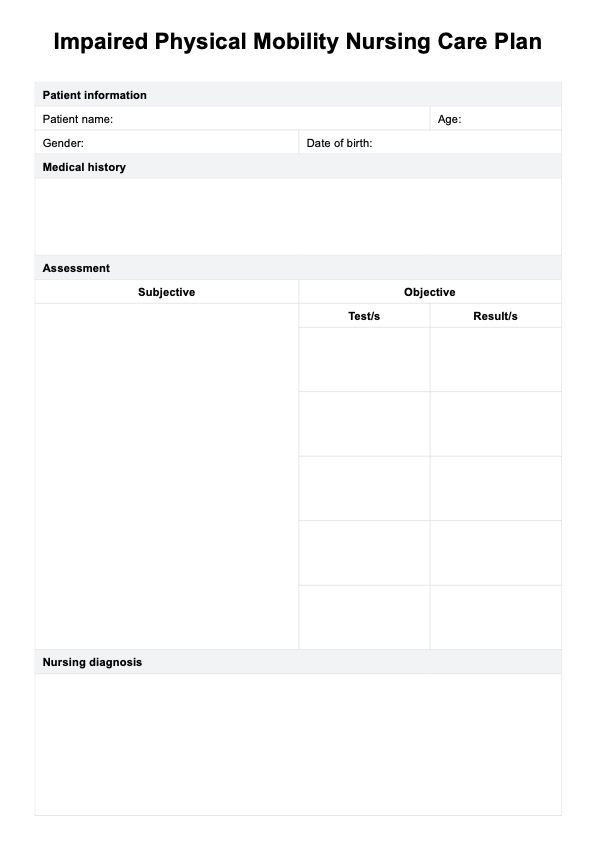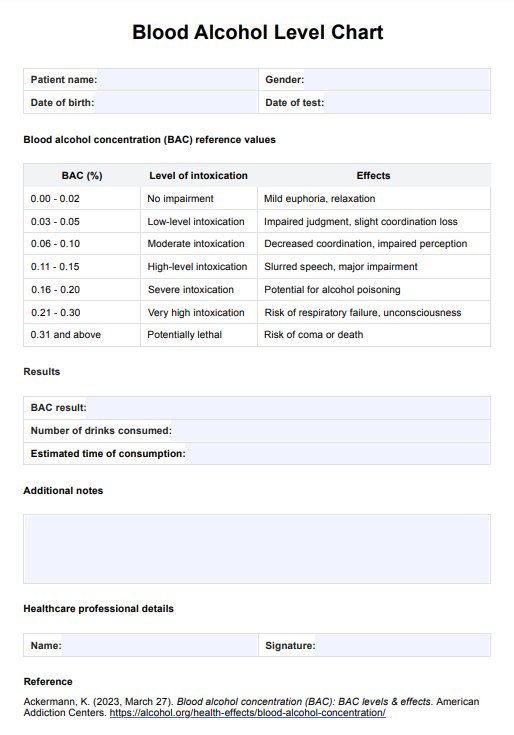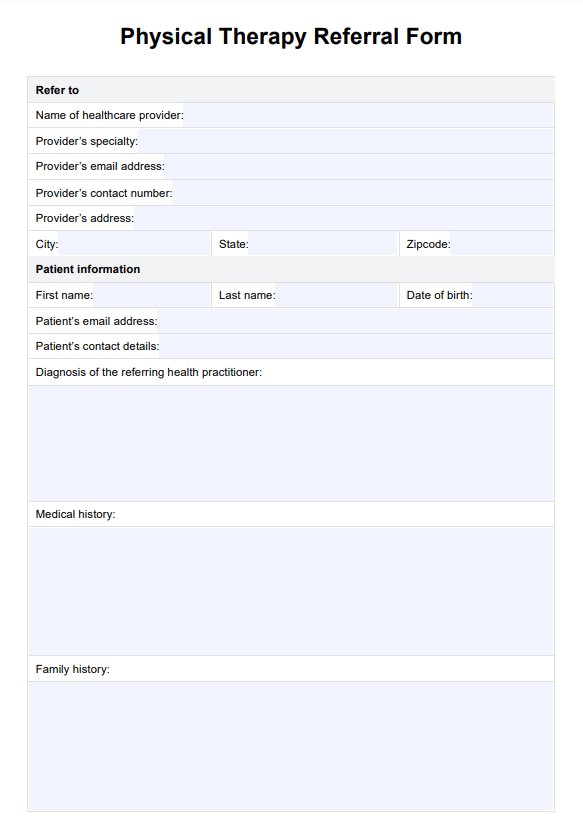Overhead Squat Assessment
Get access to a free Overhead Squat Assessment template. Learn how to perform this test and interpret the results.


What is the Overhead Squat Assessment?
The overhead squat assessment is a dynamic functional movement analysis utilized by fitness professionals and sports medicine experts to identify movement dysfunctions, muscle imbalances, and inefficiencies in an individual's movement patterns.
This assessment provides practical insights by positioning the arms overhead and assuming a squat starting position. It helps highlight issues such as excessive forward lean, arms falling forward, poor ankle mobility, and compromised lumbar spine posture. These observations are not just observations; they are the key to designing corrective exercises that improve form and promote optimal functional movement.
This tool is fundamental in physical therapy and sports conditioning as it empowers the development of personalized training programs to address identified deficiencies, enhancing athletic performance and reducing the risk of injury.
Overhead Squat Assessment Template
Overhead Squat Assessment Example
How to perform the test
One of the most popular variations of this assessment is the National Academy of Sports Medicine's (NASM) overhead squat test. In this version, the individual stands with their feet shoulder-width apart and toes pointing forward. The arms are raised vertically above the head, shoulder-width apart, with palms facing forward. The participant is then instructed to squat as low as possible while maintaining proper form and control throughout the entire body.
During this movement, a fitness professional or therapist would note deviations from ideal forms, such as the knees caving in, heels rising off the ground, or arms dropping forward. The professional may also observe if there is any asymmetry or imbalance between the left and right sides of the body.
Professionals can also use the Functional Movement Screen template to assess functional movement patterns further and identify any imbalances or limitations that may affect overall performance.
Squat assessment viewpoints
During the squat assessment, there are various viewpoints that a professional may use to gain a better understanding of an individual's movement patterns:
Anterior view
The anterior view is a frontal view where the professional assesses the individual's alignment from head to toe, focusing on any asymmetries or imbalances in the body. The professional can check if the patient's arms fall forward, if the knees collapse inward, or if there is an asymmetrical weight shift.
Lateral view
The lateral view is a side view where the professional can observe the individual's posture and movement patterns from a different angle. This viewpoint is especially useful for identifying excessive forward lean or rounding of the shoulders.
Posterior view
The posterior view is a back view where the professional can observe the alignment and movement patterns of the hips, lumbar, and feet. This viewpoint is helpful in identifying any imbalances between the left and right sides of the body, such as hip shifting or pelvic rotation.
What to observe during the assessment?
During the overhead squat assessment, a professional should observe the following key points:
Feet and ankles
The feet should be shoulder-width apart, with toes pointing forward. The professional should note if there is any pronation (inward rolling of the foot) or supination (outward rolling of the foot), which can affect stability and balance.
Knees
The knees should track in line with the toes throughout the movement. Any deviations, such as caving in or moving outward, can indicate muscle weakness or imbalance.
Lumbo Pelvic hip complex (LPHC)
The LPHC includes the lower back, pelvis, and hips. The professional should observe whether the lower back is excessively arching or rounding and whether the pelvis tilts forward or backward. The hip flexors and glutes should also be assessed for tightness or weakness.
Upper body
The professional should observe the alignment of the upper body, noting any rounding or excessive forward lean in the shoulders and head. This can indicate imbalances in the core and upper back muscles.
Results and interpretations
Based on the observations made during the Overhead Squat Assessment, healthcare professionals can use this information to identify any muscle imbalances or weaknesses in their patients. This can help determine appropriate treatment plans and exercises to address these issues and improve overall movement patterns.
Professionals can use their view and the patient's compensation pattern to assess any potential areas of concern and develop a personalized plan that focuses on correcting imbalances, improving posture, and ultimately preventing injuries.
Download our free assessment template for more details on interpreting the overhead squat test results.
Importance of regular assessments
Regular movement assessments, such as the Overhead Squat Assessment, are crucial for identifying any potential issues that could lead to injuries or impact overall performance. By assessing and addressing imbalances and weaknesses in posture and movement patterns, healthcare professionals can help prevent injuries and improve the overall function of their patients.
In addition to preventing injuries, regular assessments also allow professionals to track progress and make any necessary adjustments to treatment plans. This can lead to more effective and efficient care for patients.
References
National Academy of Sports Medicine. (n.d.). How to perform an overhead squaassessment (OHSA). Blog.nasm.org. https://blog.nasm.org/certified-personal-trainer/how-to-perform-an-overhead-squat-assessment-osa?utm_source=blog&utm_medium=referral&utm_campaign=organic&utm_content=ReasonsToBecomeCES
National Academy of Sports Medicine. (2009). Overhead squat solutions table. https://www.nasm.org/docs/default-source/PDF/overhead_squat_solutions_table-(ces-version)-(pdf-40k).pdf?sfvrsn=2
Commonly asked questions
The overhead squat assessment helps personal trainers identify any imbalances or dysfunctions in their clients' movement patterns. This information can be used to design personalized training programs and prevent injuries.
Mobility restrictions, muscle imbalances, and poor posture are common issues identified through an overhead squat assessment. These issues can lead to decreased performance, increased risk of injury, and compensation patterns in movement.
While the overhead squat is a basic movement pattern, it requires some mobility and stability. Individuals with severe mobility restrictions or injuries may be unable to perform this assessment safely.


